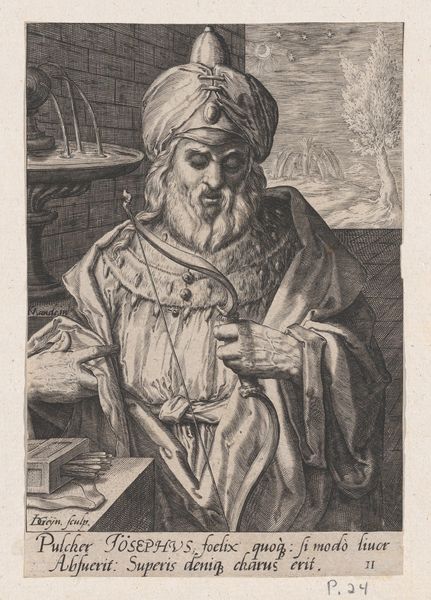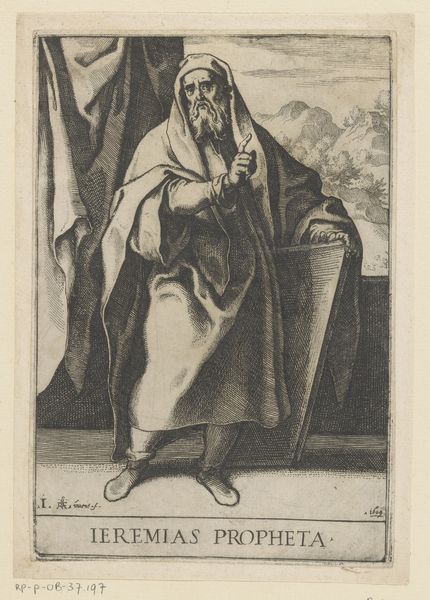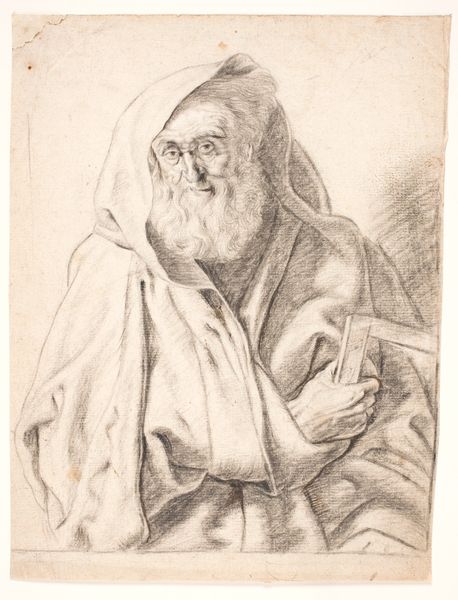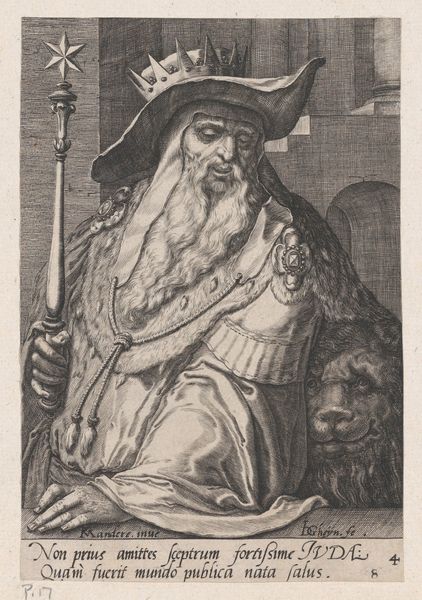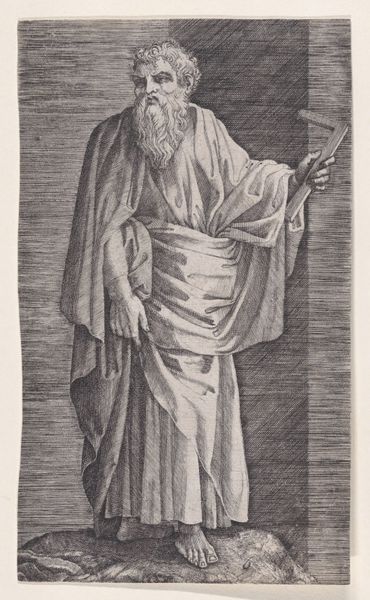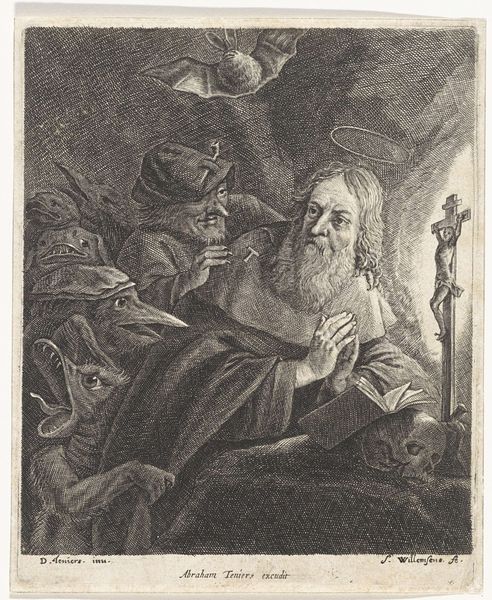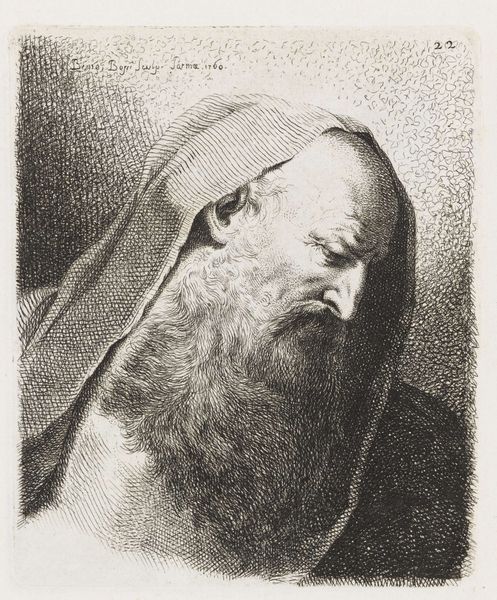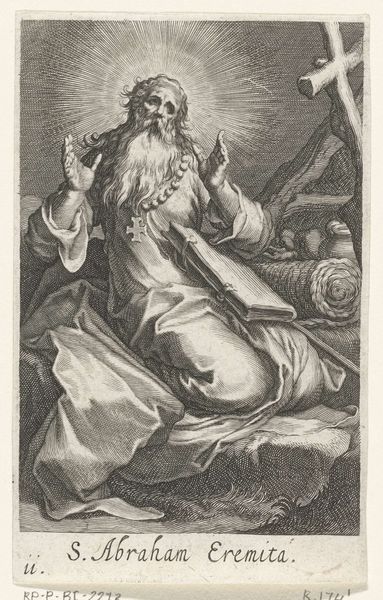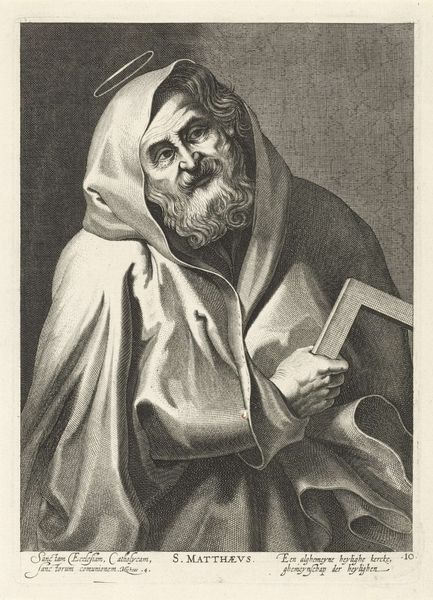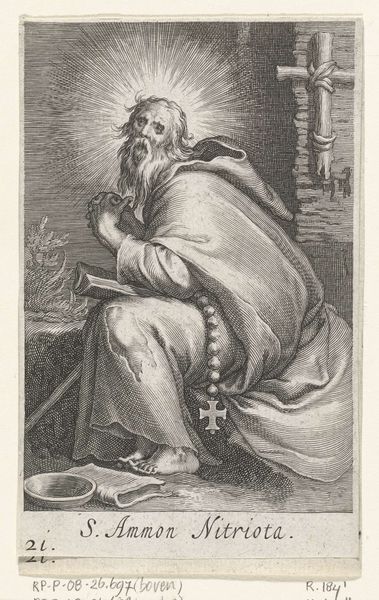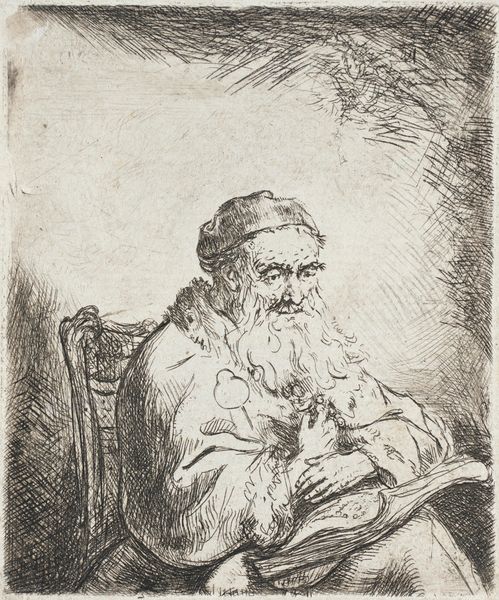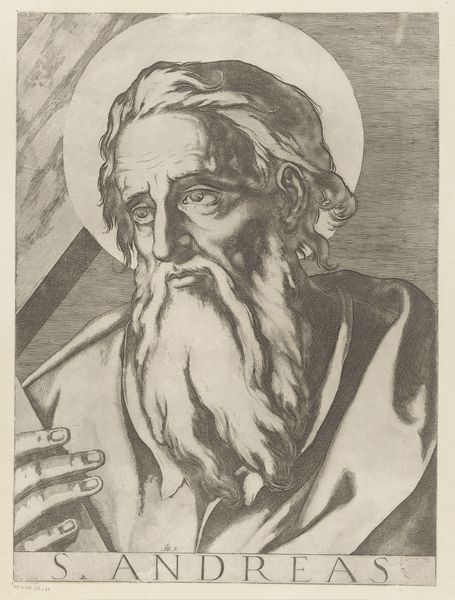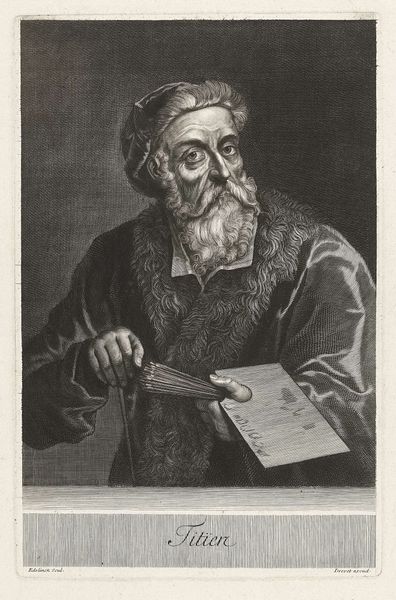
print, engraving
#
portrait
#
baroque
# print
#
figuration
#
history-painting
#
engraving
Copyright: National Gallery of Art: CC0 1.0
Editor: Here we have Jan Lievens' engraving of Saint Anthony. The cross-hatching is so intricate; you can almost feel the texture of his worn cloak. It’s such a stark image, almost severe. What can you tell me about it? Curator: Look at the engraving itself, how the artist utilized a copper plate to disseminate this image. Consider how this method of production democratized images of religious figures like Saint Anthony for broader consumption. Do you notice how the varying density of lines creates highlights and shadows that describe the folds of the cloak? This directs your eye and tells you a lot about how much value was placed in materiality and the details in the fabrication process. Editor: So you're focusing on the making of the artwork? The fact that it's an engraving influences the way we should understand the piece? Curator: Precisely. The accessibility afforded by the printmaking process also alters the relationship between artist, subject, and viewer. Instead of a unique painting commissioned for a wealthy patron, we have a mass-produced image available to a wider audience. It makes me think about the relationship between artistic labor and social change. Editor: That's fascinating! I never thought about the social impact of making prints more available to everyone. Curator: The artist is not simply depicting a religious icon; they're also engaging with contemporary modes of production. How does this understanding of materiality reshape your perspective on the artwork? Editor: It shifts my attention from the saint’s piety to the context in which the work was produced and how these prints themselves could have functioned in society. Curator: Indeed, this focus encourages us to investigate labor practices and systems that facilitated its dissemination. What was the role of workshops in Lievens’ time, for instance? It prompts new lines of inquiry and helps us look past iconography. Editor: Thank you; I've certainly learned to appreciate not just *what* is depicted, but also *how* it came to be.
Comments
No comments
Be the first to comment and join the conversation on the ultimate creative platform.
